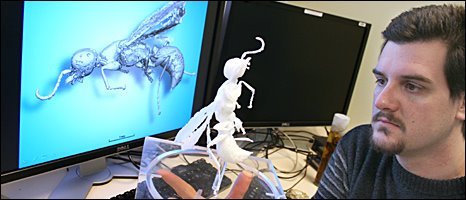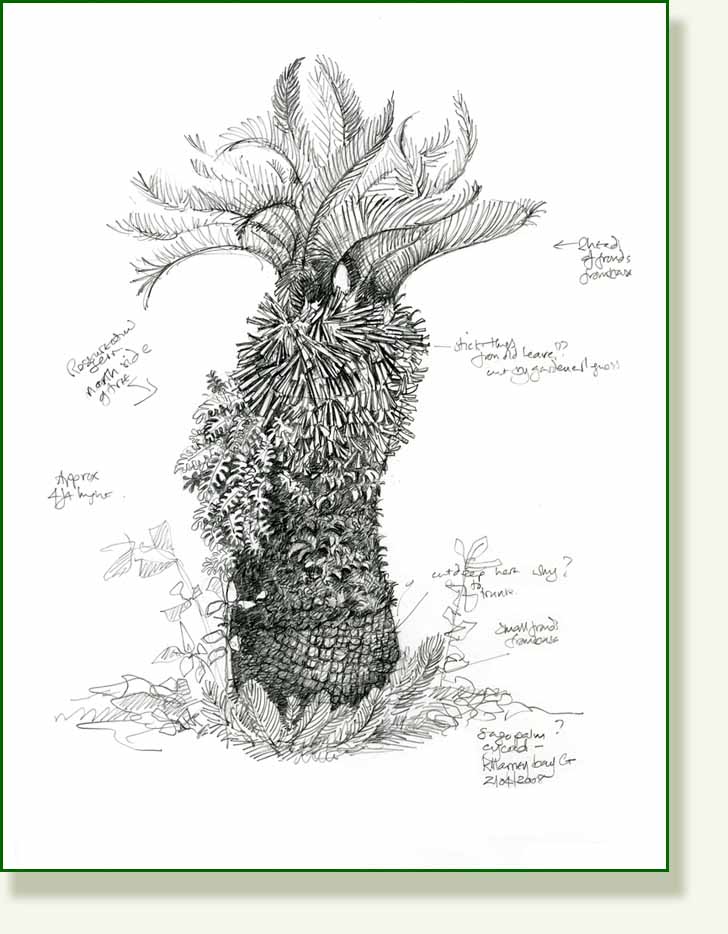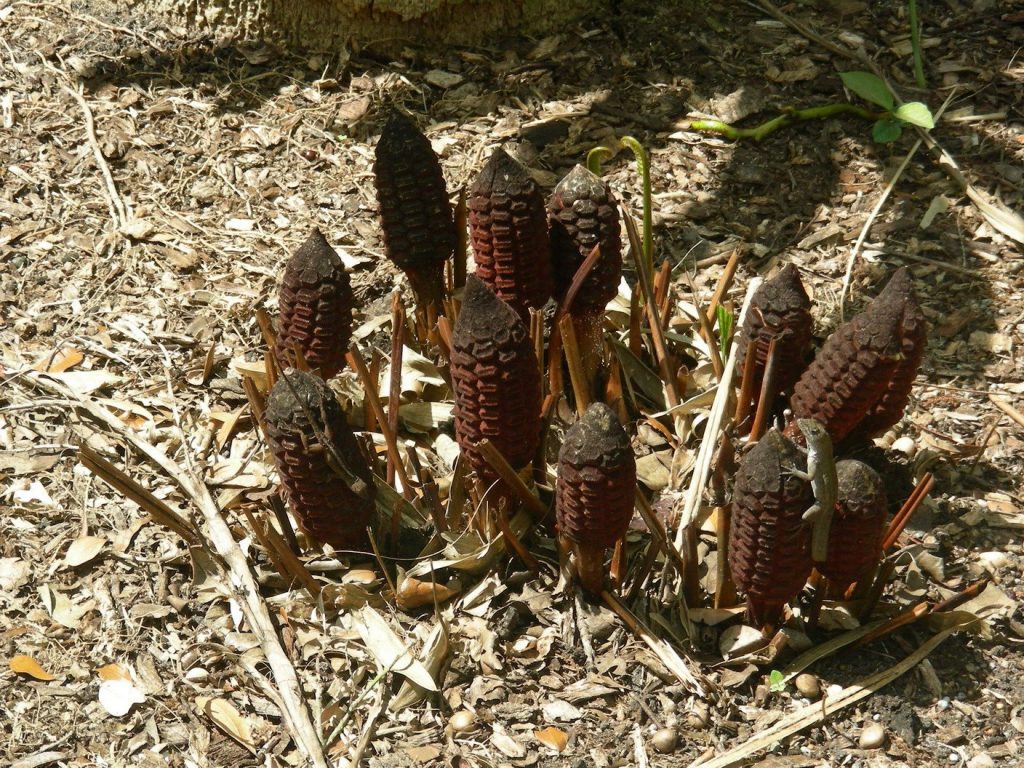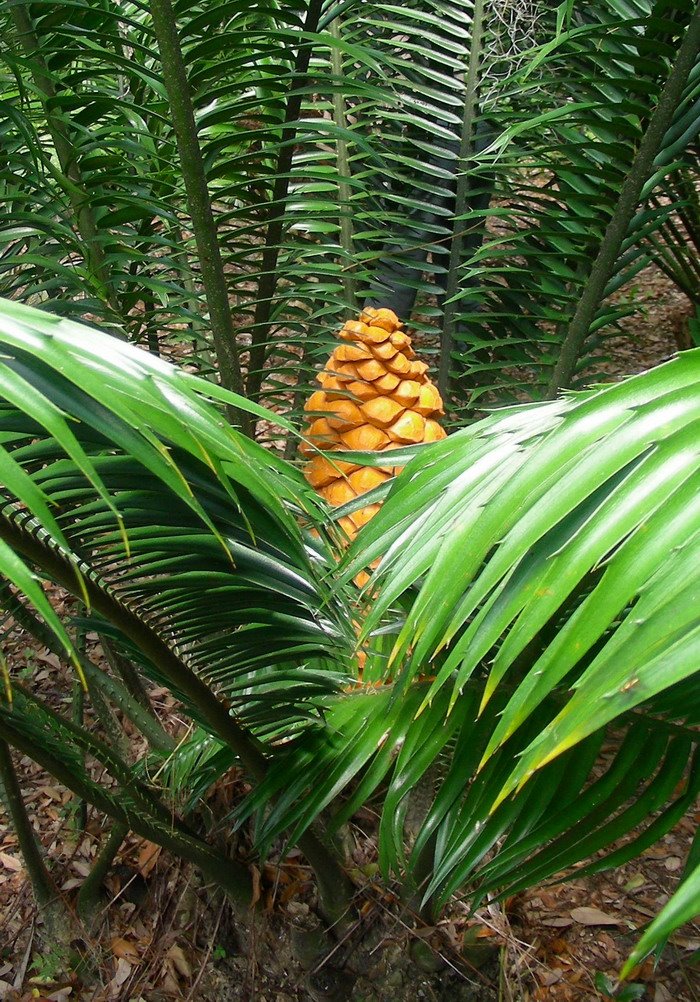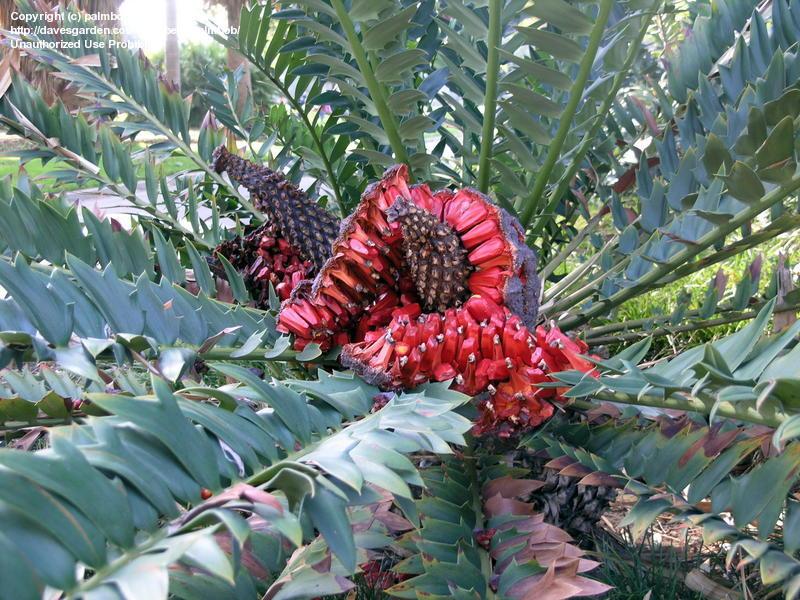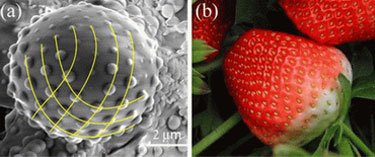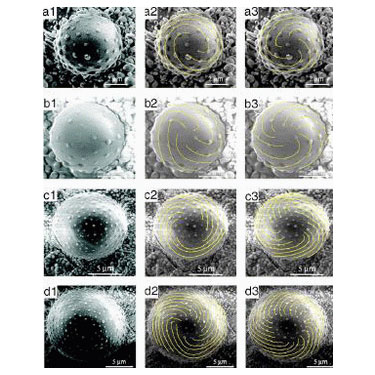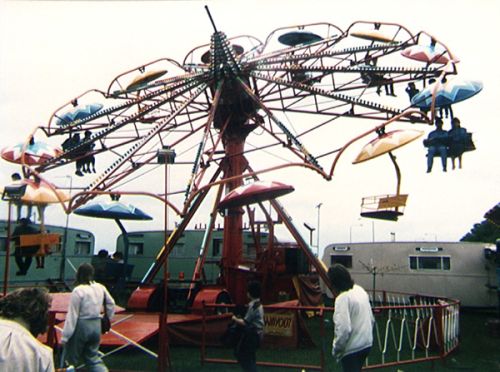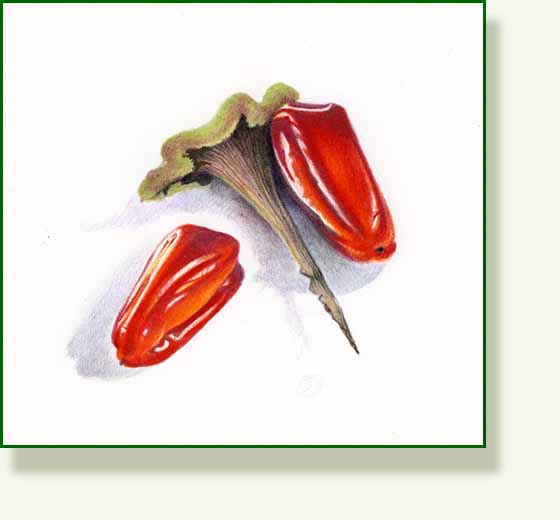Cycads
Here, as promised from my previous post Cycad Seeds, is just a little information about these amazing, ancient, Permian era plants that are little changed in 250 million years. Standing amongst the huge primeval creatures on a steamy, close day in Leu Gardens, and understanding some of their history, you could be forgiven for mistaking the air’s damp humidity for the the hot breath of a passing Brontosaurus. They are a glimpse into a strange and wonderful past time.
Quiet, stately plants with leaves shooting straight up from the ground or from long thick trunks, the Cycads are gymnosperms and include zamiaceae, encephalartos, and macrozamia. Some are like palms, some more like ferns and some more shrubby. One I saw at Marie Selby Gardens has long fierce thorns and has the enviable name of encephalartos horridus. These below are the cycus revolta, the confusingly named Sago Palm as it is not a palm but it does produce a type of sago.
photo Dave’s Garden again
 A native cycad to Florida is the coontie, Zamia pumila. “Coontie” is a Seminole word which approximates to ‘flour root’ and the Seminole people used it despite its poisonous properties.as a very important food source. The stems and roots had to be pounded to a pulp and washed to remove the poisons and then the paste was dried and used as a flour for baking bread. It was known as Florida “Arrow Root” and there was a sizeable industry in Florida producing the starch until about 1925, but overproduction decimated the local plants as is often the case.
A native cycad to Florida is the coontie, Zamia pumila. “Coontie” is a Seminole word which approximates to ‘flour root’ and the Seminole people used it despite its poisonous properties.as a very important food source. The stems and roots had to be pounded to a pulp and washed to remove the poisons and then the paste was dried and used as a flour for baking bread. It was known as Florida “Arrow Root” and there was a sizeable industry in Florida producing the starch until about 1925, but overproduction decimated the local plants as is often the case.
I do wonder how, and at what cost people discovered methods of getting rid of the poisonous parts of plants, or that it would be worth the obvious risk in the end. Captain Cook’s pigs, on his Australian expedition, fell foul of the poison and died. His crew only suffered a ‘hearty fit of vomiting and purging’.
Trading Sex for Pollen
Cycads have a novel way of reproducing themselves which may account for their longevity. I am not going to plumb the murky depths of plant sex to any great degree but this is very interesting
Cycads producemale and female cones on different plants. The male cone produces a scent which attracts thrips, little insects, who enter the gaps in the cone and, in doing so, cover themselves in the pollen they have been seeking. The cone then heats up which changes the attractive scent into something that the thrips don’t like at all.. they flee.. only to find that a nearby female cone is producing the weaker scent they like .. Same scent …different strength. Off they go carrying their precious load of fertilizing pollen with them.
Two scientists Irene Terry and husband Robert Roemer have been studying this behavior at the University of Utah.
“They [cycads] are trading food for sex. Pollen is the only thing these thrips eat, so they totally rely on the plants. And the thrips are the only animals that pollinate the plants.”
“These cycads heat up, and associated with that heating is a huge increase in volatile fragrances emitted by the cone” Terry says. “It takes your breath away. It’s a harsh, overwhelming odor like nothing you ever smelled before”
“Think of a guy with too much after shave” Roemer says.
Apparently this is called push-pull pollination.. a nice conversation stopper for that tedious dinner party, especially if you happen to be sitting next to an overscented lothario whose “volatile fragrance” is clashing with your prawn cocktail.
Painting Prehistory


No article about art and prehistory would be complete without mentioning the great and influential painter /illustrator/sculptor Charles R Knight. In the 1890’s and early 19oo’s he brought the prehistoric world to life for us through his careful and meticulously researched paintings.
His love of nature and quest for accuracy took him at the age of 19 to the American Museum of Natural History in New York .
 “Visiting the museum on an almost daily basis, he spent hours in the taxidermy department, studying the carcasses of many creatures, familiarizing himself with their musculature and skeletal structure“
“Visiting the museum on an almost daily basis, he spent hours in the taxidermy department, studying the carcasses of many creatures, familiarizing himself with their musculature and skeletal structure“
He became well known and worked extensively with the leading paleontologists of the day to produce models and paintings showing what the world must have looked like in those extraordinary times.
The Florida link is also here :
“He frequently visited friends and patrons in Palm Beach, Florida. They were delighted to entertain the renowned artist, and Knight used the Floridian foliage, particularly the palm trees, in his large prehistoric paintings. “
(spot the cycads in the painting above)
Here is the lovely tribute site to Knight maintained by his daughter with acknowledgements to his influence on film makers and other artists.. Willis O’Brien, animator of the classic and tragic King Kong and Ray Harryhausen’s epic monsters owed him much.
DO go and have a look at the wonderful work at Charles Knight Gallery.
Like Normal Rockwell you could say he was a commercial artist but don’t they just brighten your day?
Dino Bugs

Synchronicity is still in the air (blame Jung) as yesterday I heard about the new Xray technique (over a hundred years after Knight) that Paul Tafforeau in France has been using to reveal insects from within ancient pieces of opaque rock. The images are quite magical. Not only does this reveal their presence and detail but the information obtained from the rotating scan can then be used to create an exquisite 3D specimen. DO go and watch the short video from the BBC site here Secret Dino Bugs Revealed .
How very excited Knight would surely have been if he could have seen this.
My drawing today is a sketch of the small Cycad about 4ft ( now I know what it is! ) which grows just across the car park at the apartment. I can see it from the top of our steps. On the north side of the trunk a little colony of Resurrection Fern is growing.. and that’s another curious plant for another post.
_________________________________________
 Killarney Bay Cycad
Killarney Bay Cycad



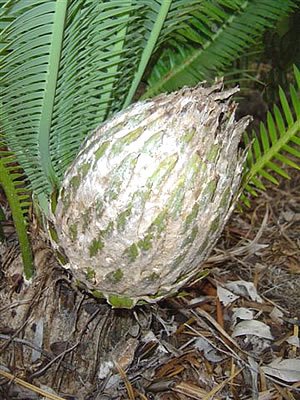
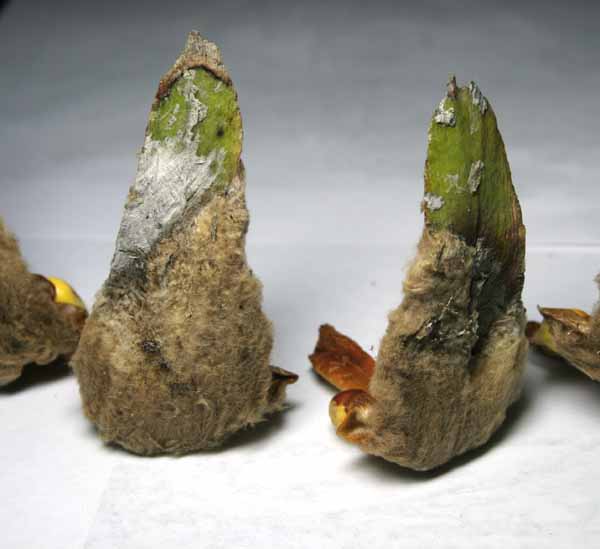

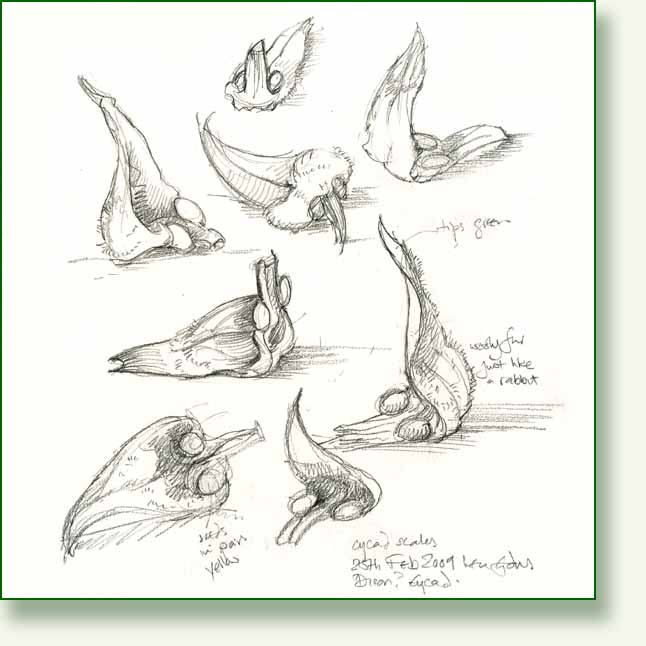
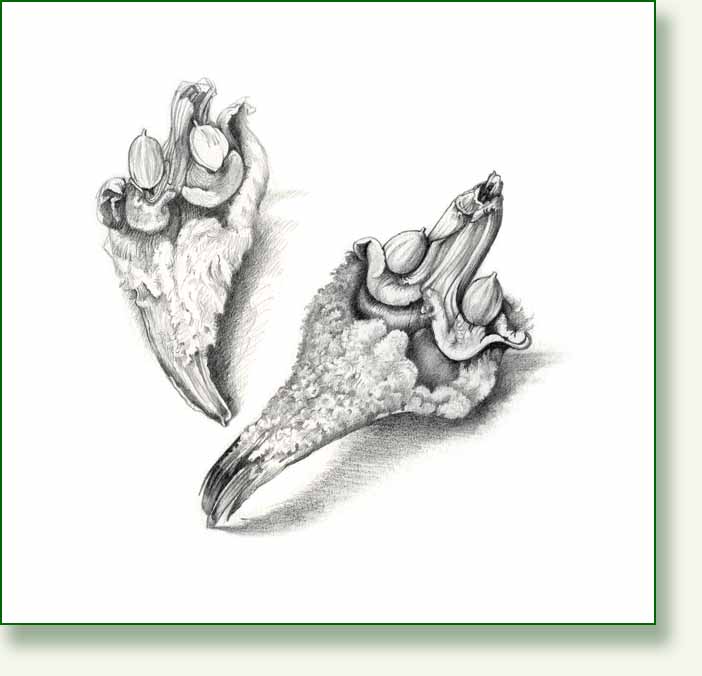
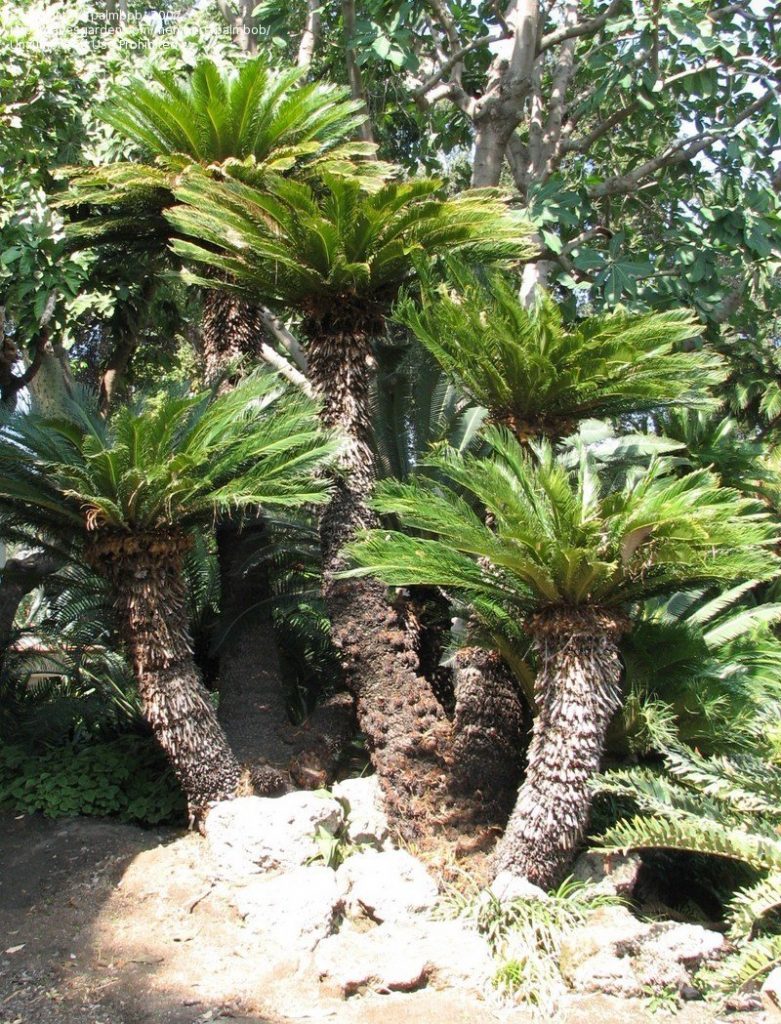 A native
A native 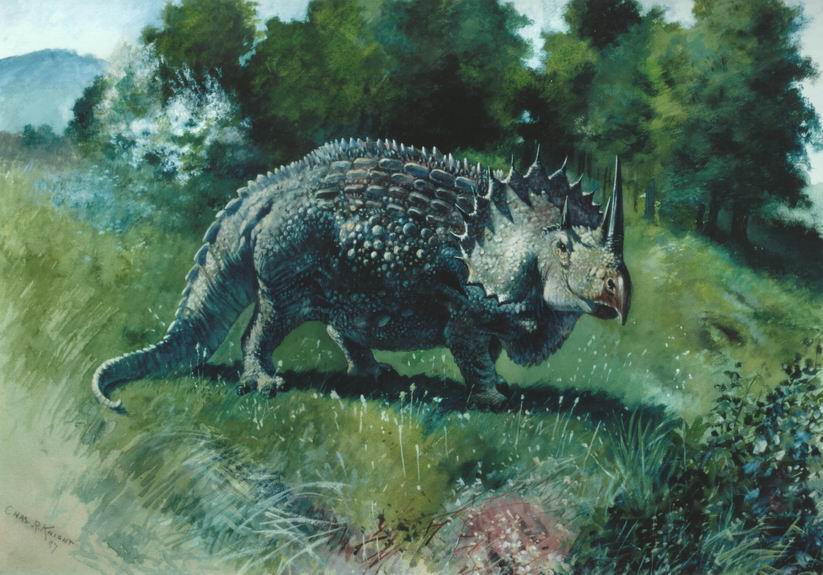
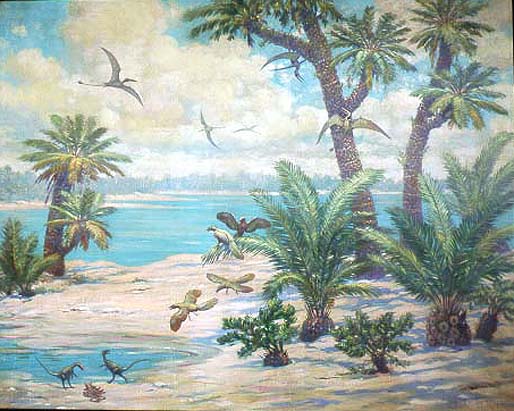
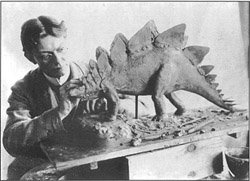 “Visiting the museum on an almost daily basis, he spent hours in the taxidermy department, studying the carcasses of many creatures, familiarizing himself with their musculature and skeletal structure“
“Visiting the museum on an almost daily basis, he spent hours in the taxidermy department, studying the carcasses of many creatures, familiarizing himself with their musculature and skeletal structure“